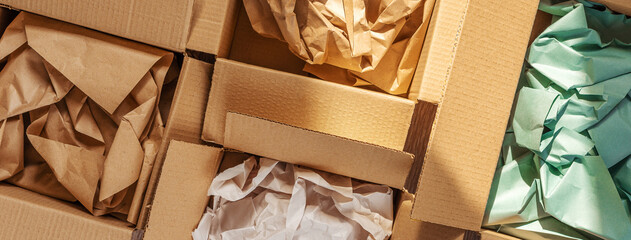What Is Bubble Wrap?
What Is Bubble wrap
A transparent plastic packaging material known as bubble wrap or air bubble wrapping is typically used to pack fragile or easily breakable products. The air-filled hemispheres that protrude from the bubbles at regular intervals provide as a cushion for delicate and easily breakable objects. There are several sizes of bubble wrap available.
Although you may wrap anything with this packing material, some things need to be boxed carefully and with better protection.
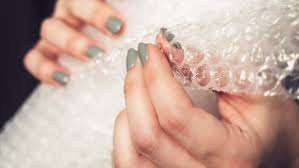
Let's take a look at some of the items that are typically wrapped in bubble wrap.
Furniture
These days, you may buy furniture online thanks to the emergence of e-commerce businesses. Online stores make sure that every item, no matter how small, reaches the clients in perfect condition. They wrap the things in bubble wrappers to prevent harm to the delivered goods. To provide the necessary cushioning against vibrations and shocks during transit, glass table-tops, glass cabinet doors, and other particularly fragile glass furniture items are frequently wrapped in multiple layers of air bubble packaging sheets.
Personal Items/Sentimental Items
Some of the sentimental goods that anyone would want to wrap with the utmost care when moving or putting it away in a storage are fragile memento items, family heirlooms, and priceless books that you hold dear to your heart. Consider bubble wrap packaging film as the most effective, secure, and straightforward solution for packing.
Delicate Items/Fragile Items
Fragile goods include fine China, crystal, mirrors, paintings, sculptures, and vases. They also include artworks like paintings and figurines. Due to their fragility, they are prone to being harmed.The best packaging film to offer protection is bubble wrap, so use it instead.
Sensitive Items
Electrical and electronic devices might be damaged if they are not properly protected because they are delicate. Even a slight fall might cause permanent harm. Once more, these objects need to be shielded from static electricity. These products can be protected against electro-static discharge and will be safe even if they fall to the ground if they are wrapped in anti-static bubble wrap.
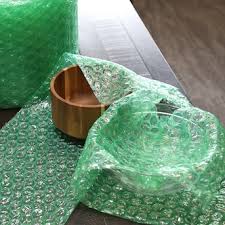
Various Bubble Wrap Types
Depending on your needs for packaging, you must select the bubble wrap films.
Typically, fragile objects like electronics, glassware, and other items are packed in little bubble wrap.
As padding for items like furniture and other business and household equipment, large bubble wrap films are typically employed.
Electronics such as televisions, computers, laptops, cell phones, and other devices are wrapped in anti-static bubble wrap to safeguard them against static electricity.
To package books, CDs, and even picture frames, use bubble wrap envelopes. These objects are protected to the fullest extent possible from shock and vibration in the bubble-wrap lined packaging.
Picking The Right Kind OfBubble Wrap
It can be difficult to choose the proper bubble wrap for your things. You can choose from a large variety of items that vary in size, colour, and design, including bags, sheets, tubes, and speciality items like corner protection for frames. Make a list of the things you'll be shipping, their sizes, and the level of protection they require in order to browse through the possibilities andchoose the appropriate bubble wrap.
Long or oddly shaped goods are well protected by bubble wrap tubing. Corner protectors are a fantastic way to send frames, mirrors, and other items with corners that can dent in transit.
There are many various sheet widths, lengths, and bubble sizes available for bubble wrap. Although they offer less protection, smaller bubbles can nevertheless fit inside smaller enclosures. The most protection is offered by the bigger bubbles. If the usual sizes don't suit your needs, several companies will let you modify the size of your bubble wrap.
Use anti-static bubble wrap when transporting any form of electronic equipment. Electronic chips can be harmed by static electricity from bubble wrap. Choose anti-static bubble wrap, which diffuses electric charges using anti-static material.
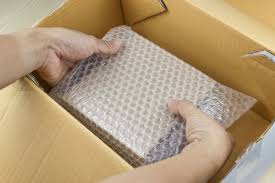
When to Use Bubble Wrap
For reliable shipping protection for fragile objects, use bubble wrap. You may have peace of mind and avoid the trouble of broken items by protecting your belongings. Utilizing protective packaging materials will ultimately save you time and money because handling returns and complaints costs time and money.
Consider the degree of protection your things require as well as the packing you are already using when deciding whether or not to use bubble wrap for your items. If you're using a poly mailer to transport smaller things, the bubble wrap, for instance, is already included in the envelope. Adding more bubble wrap is not necessary.
Bubble wrap is the best option if you are shipping anything that is breakable or simply needs an extra layer of protection from scratches or bumps.Anything bulky, pricey, or breakable can benefit from a layer in particular, but err on the side of caution.
Six benefits of using bubble wrap while shipping
Bubble wrap is a great impact insulator.
The main purpose of bubble wrap is to protect and secure products during travel, and it excels at this task. Bubble wrap is used by shippers to protect their goods during freight travel, which regrettably frequently involves rough handling or potholes. Its air bubbles are sealed, forming an amazingly strong barrier against impact that is flexible but lasting. It can shield products from even severe blows when doubled or tripled in layers and used with a strong corrugated shipping box.
It's possible to reuse bubble wrap.
Keep the bubble wrap you've used when you're done using it! Except when seriously damaged, bubble wrap can almost always be used again. You can use your bubble wrap repeatedly to safeguard your most important items in transit as long as the majority of the bubbles are still intact. Compared to other packing materials that are difficult to reuse, bubble wrap is a significantly more environmentally responsible choice. It also has the potential to save a lot of money.The fact that it is straightforward to set up as a component of a ready-to-use returns box makes it an excellent choice for businesses that allow simple client returns.
Bubble wrap is reasonably priced.
In addition to being recyclable, bubble wrap is also cheaper in the beginning. Bubble wrap in bulk is very reasonably priced at Air Sea Containers. We even have two-packs of 24-inch bubble wrap rolls and 48-inch jumbo bubble wrap rolls. Businesses who transport a lot of small items might also choose our individual bubble wrap bags, which include bubble wrap and a bag. Whatever way you look at it, bubble wrap is inexpensive.

Bubble wrap is portable.
One of the smallest void fill packaging materials is bubble wrap. Its construction is primarily made of air, with a few layers of incredibly light plastic added for strength. That results in an extremely lightweight packaging material, which might result in shipping cost savings, especially if you're shipping in bulk. When delivering big quantities of goods, less packaging may result in lower fuel costs as well as lower expenses when shipping by weight.
A fantastic stress reliever is bubble wrap.
You probably won't be able to resist as much as we could. At the end of the day, bubble wrap is just plain entertaining, andhaving some of it sitting around the warehouse or office may be a terrific way to decompress after those frustrating days we all occasionally have. Additionally, clients adore it as well. For many individuals, it's a wonderful extra that they may use again or pop as much as they like.
Bubble wrap has several uses.
Almost any type of small cargo can be insulated and protected with bubble wrap. Large sheets of material are pliable enough to successfully wrap and protect a variety of irregularly shaped cargo, and it can be simply cut with scissors into practically any shape you require. Additionally, it has a wide range of uses outside of shipping. Even some individuals in the summer use it to insulate their windows. The options are almost endless with a little imagination!
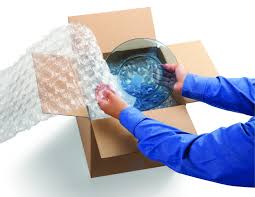
How is Bubble Wrap Made?
Tiny resin beads of varying sizes are used to create bubble wrap. After that, the resin is mixed and heated to create a thin coating. The film is then run through rollers after being flattened to the desired thickness. Small perforations in these rollers suction air onto the film to create the air bubbles. The film is run through further rollers and sealed with an additional layer of film once the air has been blown into it. The bubble wrap is cut, perforated, and rolled into massive rolls of industrial-sized bubble once the second layer of film has successfully trapped the air.
Bubble wrap may now be totally customized thanks to this process. The length, perforations, bubble size, and even the colour and shape of the bubbles may all be altered!
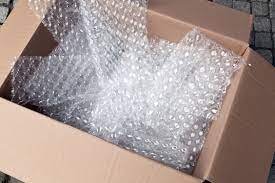
The Correct Bubble Wrap Packaging Method
After weighing your alternatives and renting a storage container in in India it's time to pack up your belongings. To protect your fragile belongings for long-term or brief storage, use cushioning packing materials like Bubble Wrap. By watching this highlighted video, you may learn how to properly use this common packaging material.
Wrap your item with the bubbles facing in for best protection. To wrap a bowl, for instance, lay a sheet of plastic wrap on a level surface with the bubbles facing up. Fold the sides inside and place the bowl on top. The wrap should be taped shut. For the protection of breakable items, use more than just wrap.Fill the box to the brim with extra packing material, such as packing peanuts or crumpled newspaper, before bringing it to your self-storage facility.
Is it a good insulator?
Bubble wrap is a fantastic insulator in addition to being a fantastic protector of objects. Energy transfer is more challenging in confined spaces because air resists temperature changes when air molecules move around.
Bubble wrap, which is merely air bubbles wrapped in plastic, is a common material for insulating homes and other buildings.
The use of bubble wrap as insulation has number of benefits. First, it is simple to cut with scissors into any form or size. Can be used without any technological prerequisites.
The bubble wrap may be easily moved from one location to another due to its small weight.
No adhesive is necessary; just wet the glass and push the bubble wrap against it to keep it attached to the window. If the bubbles are still intact and the bubble wrap maintains its shape over multiple seasons, it can also be used again.

Dos and Don'ts for Bubble Wrap Packaging
- VERIFY that the wrapping paper you intend to use is appropriate for the kind of bubble wrap you have. Because of this, several companies create "peel and stick" variations. For more information on the finest tape for gift wrapping, see our earlier post!
- DO unroll all your rolls in advance so they have time to spread out once more before you use them. When you're not using them right away, try to preserve them in their original packing or bagif at all possible, especially if there are numerous items in each package or bag and/or your storage space is limited.
- Create a robust box so that your bubble wrap envelope will be stable and permanent. Your bubble-wrapped gift may slide around and sustain harm if you use a box that is too small or weak.s
- USE bubble wrap with smaller bubbles if you're using delicate material to wrap the item you're attempting to protect, such as tissue paper.
- DON'T use bubble wrap that is too large for the item you are protecting; bubble wrap should fit tightly around the item.
- DO NOT tape down any of the bubble wrap until the package has been sealed.
- DO NOT use loose bubble wrap pieces as packing material because they are simple to remove.
- DO NOT allow kids to play with bubble wrap while you are working.
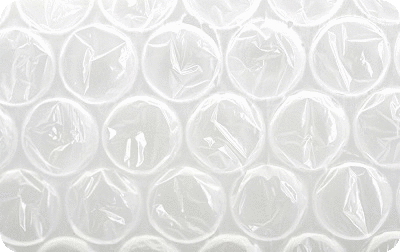
Is it recyclable?
Environmentally friendly and recyclable, bubble film. This material can be recycled in a variety of ways by manufacturers and end users. When they conduct their routine collection, some local authorities also collect it with other plastics, such milk cartons and tote bags.
To recycle bubble wrap responsibly, look for a recycling location that can handle it. If you are having trouble locating a facility that will process it, it is simple to reuse.
If you create products or handle commodities in transit that need to be protected, bubble wrap is a great environmentally responsible option. By providing material in bulk at Spring-pack, we are able to lower your packaging expenses without sacrificing the material's quality. You can get substantial discounts with us, and we always have affordable prices.

